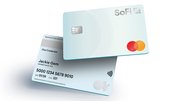Blog
Will cashless ATMs ever pay off for IADs?
July 25, 2012 by Thomas Hailey — Director of Business Development, CORD Financial Services
The concept of a cashless ATM is not new to the market. Scrip machines have appeared in merchant locations across the world for more than two decades, but have seen limited success in the United States due largely to regulatory stipulations limiting processing network availability.
KAL's recent market launch of a new cashless ATM has generated much conversation over a relatively old technology. Adding banking features to target "on us" transactions; KAL plans to succeed with scrip by leveraging internal bank networks. Although financial institution networks are KAL's target market, IADs question if this will bring success to cashless machine deployments for merchants and retailers on third party networks.
Since the early 1990s, key U.S. industry manufacturers and IADs have ceased endeavors to sell cashless ATMs due to stringent processing regulations from MasterCard and Visa, and shrinking availability of regional networks supporting scrip.
Triton Systems was one key U.S. based manufacturer to produce a cashless ATM. Beginning production in 1992, the "Triton SuperScrip" cashless model lasted less than eight years on the market. In 2005, Triton discontinued the model.
IAD giant Cardtronics also manufactured and sold a scrip terminal called the Cash Ticket Machine. The most polished version of their scrip machine hit the market in 1995. By 1997 their portfolio of Cash Ticket Machines totalled about 900. Today Cardtronics no longer sells a scrip model.
International Merchant Services Inc. began deploying scrip terminals in 1992 and had a portfolio of about 600 machines at its peak. By 2004 IMS' scrip portfolio totalled about 100 scrip machines. They no longer sell a cashless model today.
"Scrip was a fantastic product, and the technology would have succeeded if MasterCard and Visa did not have rules against it," said Jonathan Johnson, vice president at IMS. "Regional networks alone were not enough to keep the transactions flowing. Many regional networks no longer allow scrip and some processors have even removed support."
Some IADs believe MasterCard and Visa still do not have a reason to make their networks available for scrip. KAL, however, says they are working with third party processors to certify the machine, making it available for IAD deployment.
KAL's executive vice president of global sales, Steve Hensley, explained that KAL did not initially consider IADs as a target market.
"Originally this was developed for banks in developing countries who could use the RTM as a way to extend branch reach and leverage the cash resources in retail locations as a way to do transactions on behalf of the bank where either a location or an ATM didn't make sense," said Hensley.
Since serving IADs was not the original target market for the machines, KAL has a few loose ends to tie up before going to market with a solution for IADs. Hensley said, "We still need to work with networks to get it certified. KAL is used to doing this for banks on internal networks. Working with third party networks is a new experience for us. We're hoping to have certifications tied up by year end."
Given the historical network reluctance to support cashless, and the recent Visa, MasterCard settlement, it seems questionable that KAL will be able to certify with MasterCard and Visa at all, let alone by the year's end.
—co-written by Andrea Osgood
About Thomas Hailey
Included In This Story
KAL ATM Software
KAL software delivers ATM efficiency and innovation you can bank on. It powers over 350,000 ATMs and dispenses more than $1 trillion per year.
Triton Systems
Triton FI based products • NO Windows 10™ Upgrade • Secured locked down system that is virus/malware resistant • Flexible configurations - Drive-up and Walk-up • Triton's high security standards • NFC, anti-skim card reader, IP camera and level 1 vaults are all options • Triton Connect monitoring • Lower cost













